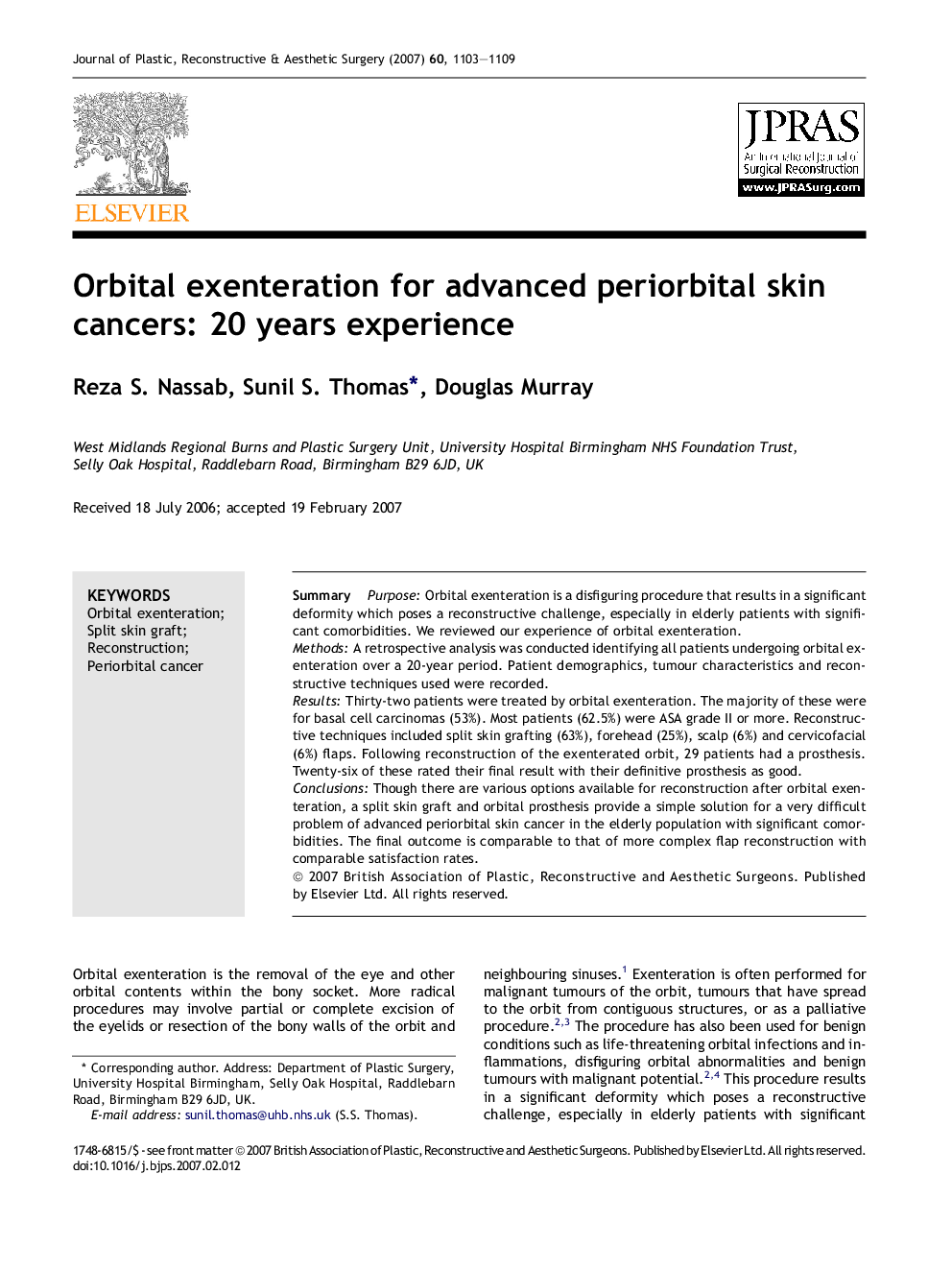| Article ID | Journal | Published Year | Pages | File Type |
|---|---|---|---|---|
| 4122308 | Journal of Plastic, Reconstructive & Aesthetic Surgery | 2007 | 7 Pages |
SummaryPurposeOrbital exenteration is a disfiguring procedure that results in a significant deformity which poses a reconstructive challenge, especially in elderly patients with significant comorbidities. We reviewed our experience of orbital exenteration.MethodsA retrospective analysis was conducted identifying all patients undergoing orbital exenteration over a 20-year period. Patient demographics, tumour characteristics and reconstructive techniques used were recorded.ResultsThirty-two patients were treated by orbital exenteration. The majority of these were for basal cell carcinomas (53%). Most patients (62.5%) were ASA grade II or more. Reconstructive techniques included split skin grafting (63%), forehead (25%), scalp (6%) and cervicofacial (6%) flaps. Following reconstruction of the exenterated orbit, 29 patients had a prosthesis. Twenty-six of these rated their final result with their definitive prosthesis as good.ConclusionsThough there are various options available for reconstruction after orbital exenteration, a split skin graft and orbital prosthesis provide a simple solution for a very difficult problem of advanced periorbital skin cancer in the elderly population with significant comorbidities. The final outcome is comparable to that of more complex flap reconstruction with comparable satisfaction rates.
